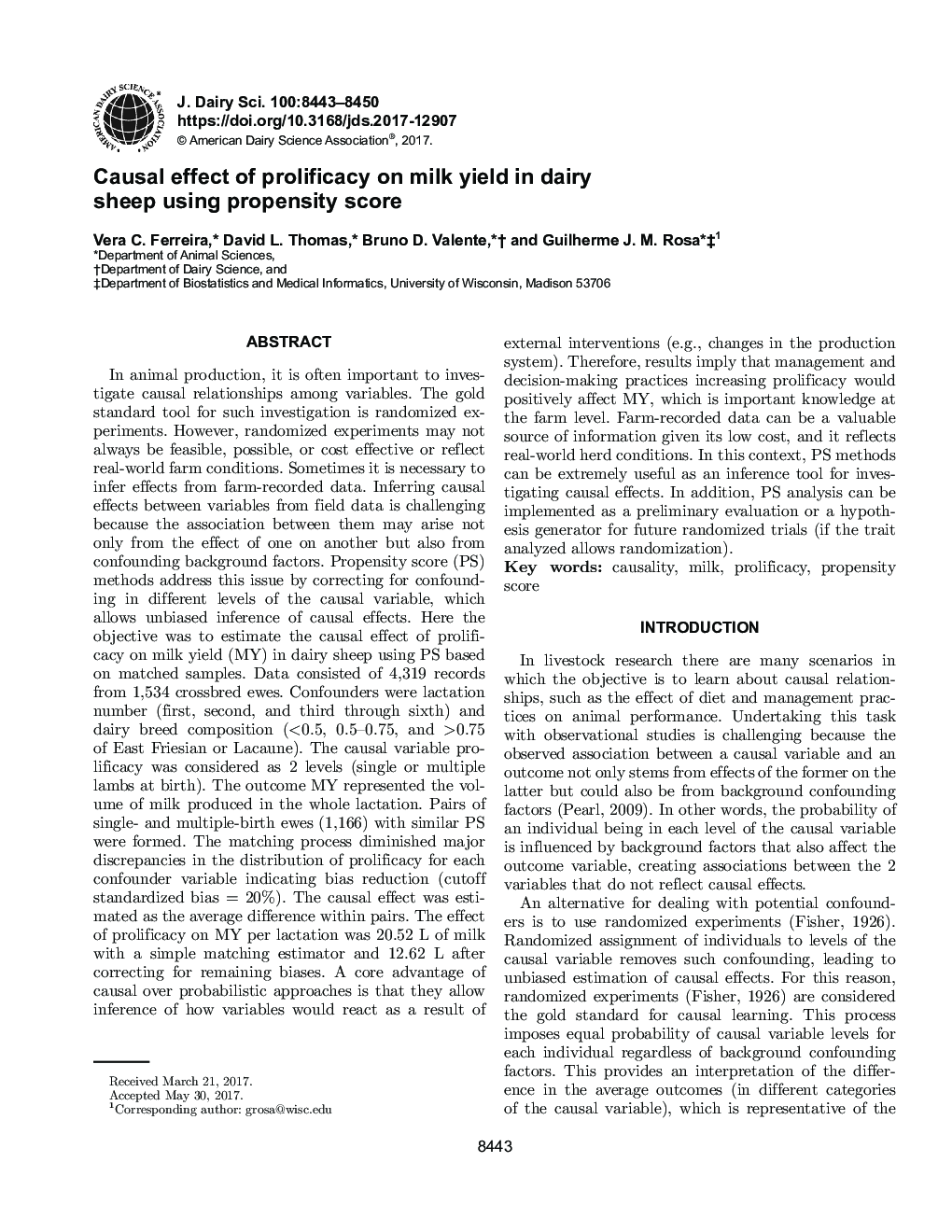| کد مقاله | کد نشریه | سال انتشار | مقاله انگلیسی | نسخه تمام متن |
|---|---|---|---|---|
| 5542031 | 1402513 | 2017 | 8 صفحه PDF | دانلود رایگان |
عنوان انگلیسی مقاله ISI
Causal effect of prolificacy on milk yield in dairy sheep using propensity score
ترجمه فارسی عنوان
اثر علت باروری در تولید شیر در گوسفند های لبنی با استفاده از نمره گرایش
دانلود مقاله + سفارش ترجمه
دانلود مقاله ISI انگلیسی
رایگان برای ایرانیان
کلمات کلیدی
علیت، شیر، طعم و مزه، نمره گرایش،
موضوعات مرتبط
علوم زیستی و بیوفناوری
علوم کشاورزی و بیولوژیک
علوم دامی و جانورشناسی
چکیده انگلیسی
In animal production, it is often important to investigate causal relationships among variables. The gold standard tool for such investigation is randomized experiments. However, randomized experiments may not always be feasible, possible, or cost effective or reflect real-world farm conditions. Sometimes it is necessary to infer effects from farm-recorded data. Inferring causal effects between variables from field data is challenging because the association between them may arise not only from the effect of one on another but also from confounding background factors. Propensity score (PS) methods address this issue by correcting for confounding in different levels of the causal variable, which allows unbiased inference of causal effects. Here the objective was to estimate the causal effect of prolificacy on milk yield (MY) in dairy sheep using PS based on matched samples. Data consisted of 4,319 records from 1,534 crossbred ewes. Confounders were lactation number (first, second, and third through sixth) and dairy breed composition (<0.5, 0.5-0.75, and >0.75 of East Friesian or Lacaune). The causal variable prolificacy was considered as 2 levels (single or multiple lambs at birth). The outcome MY represented the volume of milk produced in the whole lactation. Pairs of single- and multiple-birth ewes (1,166) with similar PS were formed. The matching process diminished major discrepancies in the distribution of prolificacy for each confounder variable indicating bias reduction (cutoff standardized bias = 20%). The causal effect was estimated as the average difference within pairs. The effect of prolificacy on MY per lactation was 20.52 L of milk with a simple matching estimator and 12.62 L after correcting for remaining biases. A core advantage of causal over probabilistic approaches is that they allow inference of how variables would react as a result of external interventions (e.g., changes in the production system). Therefore, results imply that management and decision-making practices increasing prolificacy would positively affect MY, which is important knowledge at the farm level. Farm-recorded data can be a valuable source of information given its low cost, and it reflects real-world herd conditions. In this context, PS methods can be extremely useful as an inference tool for investigating causal effects. In addition, PS analysis can be implemented as a preliminary evaluation or a hypothesis generator for future randomized trials (if the trait analyzed allows randomization).
ناشر
Database: Elsevier - ScienceDirect (ساینس دایرکت)
Journal: Journal of Dairy Science - Volume 100, Issue 10, October 2017, Pages 8443-8450
Journal: Journal of Dairy Science - Volume 100, Issue 10, October 2017, Pages 8443-8450
نویسندگان
Vera C. Ferreira, David L. Thomas, Bruno D. Valente, Guilherme J.M. Rosa,
